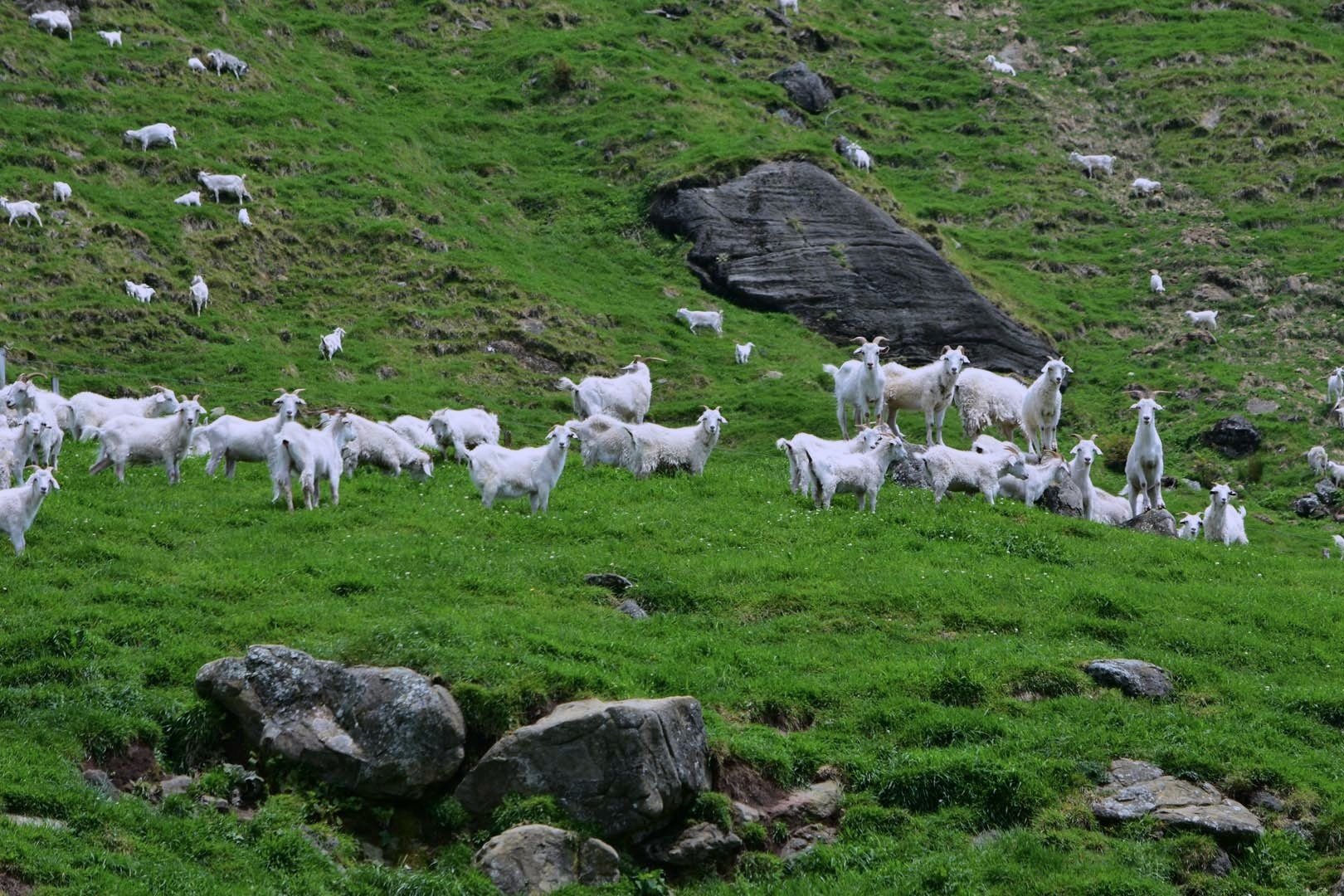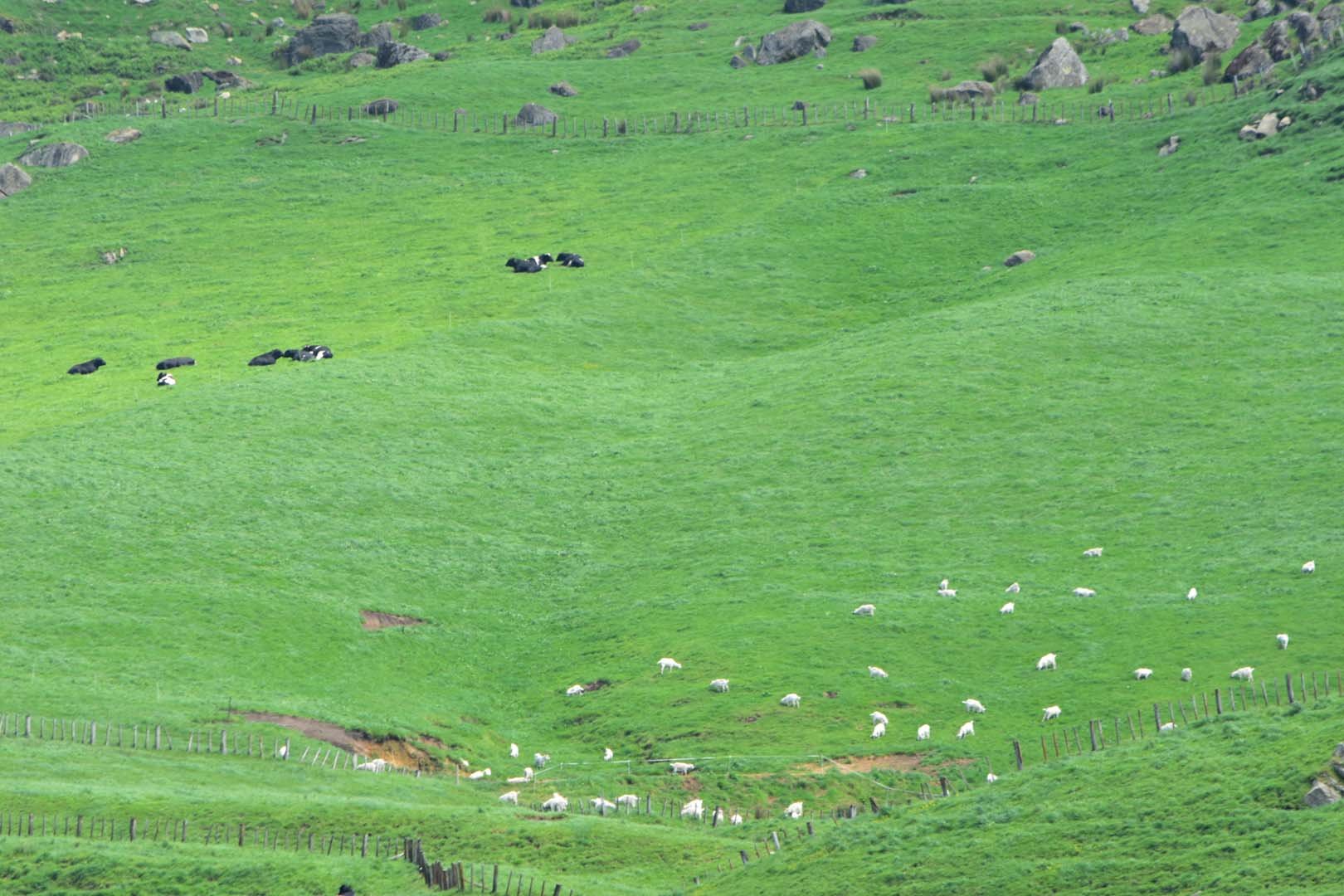
Potential of goats turns
to fruition
Sheep and beef couple envisions bright future with Cashmere flock.
New Zealand Cashmere case study – Glenn and Carolyn Prebble
The Details:
Whakarau Road, Gisborne, 442ha effective, plus 255ha leased block.
60km northwest of Gisborne.
Stock: 190 Cashmere goats. Wintering 2800 sheep and 600 cattle.
The cattle-to-sheep ratio is now 60:38 in favour of cattle. Most of the cattle are bulls, and they fatten heifers and steers as well.
10% flat, 70% rolling, remaining 20% steep.
Three years ago, Glenn and Carolyn Prebble took the plunge into running Cashmere goats in their sheep and beef operation located on Whakarau Road, 60km northwest of Gisborne and are now reaping the benefits of weed control, Cashmere fibre and meat.
Glenn admits he was a little unsure about farming goats but Carolyn had always liked the animals. After the couple viewed Angora goats during a trip to Fieldays at Mystery Creek, Hamilton, this planted the seed for Carolyn wanting goats, “but Glenn said a said a stern ‘No’ to Angora goats.”
Carolyn saw Hēpara Cashmere founder and South Otago farmer David Shaw on Country Calendar and reached out on Facebook establishing a connection. In 2019, David was visiting Gisborne and met with Glenn and Carolyn at their property to talk Cashmere goats.
“He talked a bit about what they could do, increasing stock units by 10% of goats and not changing any other stocking ratios. I thought ‘we’ll give it a go’. At the end of the day if we got 100 (goats) and it didn’t work out we could just get rid of them,” Glenn says.
The following Autumn of 2020, David teed up 100 female Cashmere hoggets for the couple from a farm in Whakatane in the Eastern Bay of Plenty.
They now have a total of 190 Cashmere goats, with just under 100 does kidding this year.
“We’ve got about 40 female replacements that will come in and go to the buck next year. We haven’t broken any records at this stage, we’re starting to get the blueprint of getting it sorted but getting that kidding percentage has been a bit tricky,” says Glenn.
Thankfully after months of rain and two cyclones, the Gisborne region is now experiencing decent weather so they’re getting good percentages.
“The F2s are white and their feet condition is really good, possibly helped by the rocky country they are on. In terms of hardiness, as they get older they are much better.”
The Prebble’s property is a mix of easy, medium and very steep country. The goats are predominately run on the steep country but once they have kidded and tided up weeds, they are sent down to paddocks where the bulls are run.
“We are doing that in one area, but we want to move into doing that on more of the farm,” says Glenn.
“We should be able to run these goats on the country that we can’t really farm, especially the country that we can’t get cattle on because it’s too steep. The sheep don’t really like the steep country either, they won’t push into it and graze it properly. We want to maximise the production of that land.”
The Prebble’s have started on the Cashmere fibre route and have shorn their herd for the first time this year. They began with F1 hoggets, and now have F2 progeny.
Managing goats
Glenn likes farming goats as they are not as much work as sheep. For example, goats don’t need dagging and don’t get flystrike. However, they can get worms which is something that needs to be managed.
Primarily a beef operation, the Prebble’s are running 60% cattle, 38% sheep and 2% goats. “We plan to increase our goat numbers to make the ratio 56% cattle, 34% sheep and 10% goats.”
“At this stage, we’re not looking at cutting our sheep numbers and replacing them with goats, we’re just looking at having 10% stock units in goats and keeping our (other) stock numbers the same.”
Winning the war on weeds
The results of holding goats in just one paddock to battle weeds have been a winner for Glenn and Carolyn. The paddock, which had “every weed under the sun in it” including horehound, Californian thistle, Scotch thistle and winged thistles, is now literally weed-free.
Glenn says the change is noticeable and hopefully as the Prebble’s increase their goat numbers, they’ll be able to ditch aerial spraying.
“The land has got a lot more opportunity once you take the weeds out of it and we have just fenced up a new paddock to put some kids and does in,” he says. This paddock has a lot of blackberry and some inkweed.
Fencing in the goats hasn’t been an issue either. Glenn has used outriggers “just above knee height” to strengthen existing fencing on the property and reports this holds the goats just fine.
Next on the agenda is working towards rotational grazing of the goats. They’re trying to get more paddocks to come online and will then increase goat numbers as well. Once rotational grazing is underway, this will improve animal health and lessen the potential worm burden to manage.
Goats are a potential benefit for many Gisborne farms
While Glenn cautions that goats won’t suit every farm system in the Gisborne district, he strongly believes there are a number of farms that could benefit from the weed-munching ability of the goats.
He explains that around Gisborne there are many farms with variegated thistle issues, Blackberry, Bathurst burr and prickly pear.
“The weed control of those through aerial spraying is a massive cost. If you can integrate goats into your system to clean up those weeds, it’s got to be a massive saving.”
The cream on top for sheep and beef farmers is making money out of the Cashmere fibre and goat meat.
And what’s Glenn’s assessment of goats now?
“I reckon they’re awesome and we’re pretty happy with them. We’re certainly going to be increasing the numbers and I see a decent future in them.”
For further information, please contact New Zealand Cashmere






